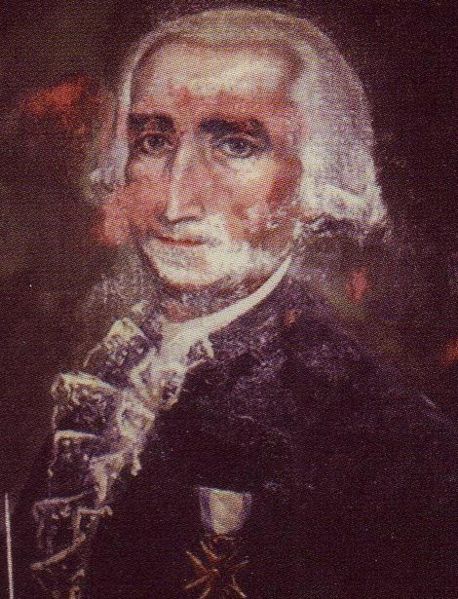The American Revolutionary War was successful in great part due to the aid of many other nations. We are all familiar with the role that France, particularly Lafayette, played in the war, providing both support and, in Lafayette’s particular case, leading troops into battle. However, other countries also provided critical support, including Spain. And one of the key figures that facilitated that support was a Basque, Diego María de Gardoqui y Arriquibar.

- Diego de Gardoqui was born in 1735 in Bilbao. His family, the Gardoquis, were wealthy proprietors in the city. His father, José de Gardoqui Mezeta, a native of Gernika, led multiple businesses that traded all across the world in many commodities, including sugar, wooden stick, hides, hawksbill, cebadilla, wax, pepper, cod, salmon, fats, wines, cocoa, and rice. Diego himself was a banker and one of the most active wool merchants in Bilbao.
- During the war, Diego acted as an intermediary between the Spanish government and the colonies, funneling funds and supplies through one of those businesses, “Gardoqui e Hijos.” Through this channel, he was able to send “215 bronze cannon, 30,000 muskets, 30,000 bayonets, 51,314 musket balls, 300,000 pounds of powder, 12,868 grenades, 30,000 uniforms, and 4,000 field tents” (Wikipedia). It is estimated that the total value of the supplies and finances sent was $400,000. Even before this, Diego was in contact with American revolutionaries. Benjamin Franklin advised John Paul Jones to contact Gardoqui as he looked for support against the British.
- In 1780, John Adams, as part of his tour of Europe when he was researching his A Defense of the Constitutions of the United States, passed through Bilbao and met with Diego and his family. Adams wrote in a letter to his wife “At Bilbao, We fare very well, and have received much Civility from Mr. Gardoqui and sons.”
- After the war, from 1785 to 1789, Diego was appointed ambassador, representing the government in Madrid in the newly established United States. In 1787, he was visited by George Washington, who had a very favorable opinion of the man, writing in 1790 that “… no man in his most Catholic Majesty’s dominions could be more acceptable to the Inhabitants of these States.”
- Upon returning to Spain, Gardoqui was made Finance Minister. He died, in Madrid, in 1798.
- As Spain’s representative in the United States, he was involved in a plan to establish a new Spanish colony, to be called “New Madrid,” west of the Mississippi. However, ultimately, the Spanish government balked at the idea of a colony with self-rule and freedom of religion and the plan went nowhere. He also proposed an idea of having the Argentine Pampa settled by Basque emigrants, another plan that went nowhere.
Primary sources: EuskoNews, Wikipedia, Larrañaga, Luis F. Gardoqui Arriquibar, Diego María de. Enciclopedia Auñamendi [online], 2019. Available at: http://aunamendi.eusko-ikaskuntza.eus/es/gardoqui-arriquibar-diego-maria-de/ar-61544/
Discover more from Buber's Basque Page
Subscribe to get the latest posts sent to your email.


2 thoughts on “Basque Fact of the Week: Diego de Gardoqui, the Basque Friend of the American Revolution”